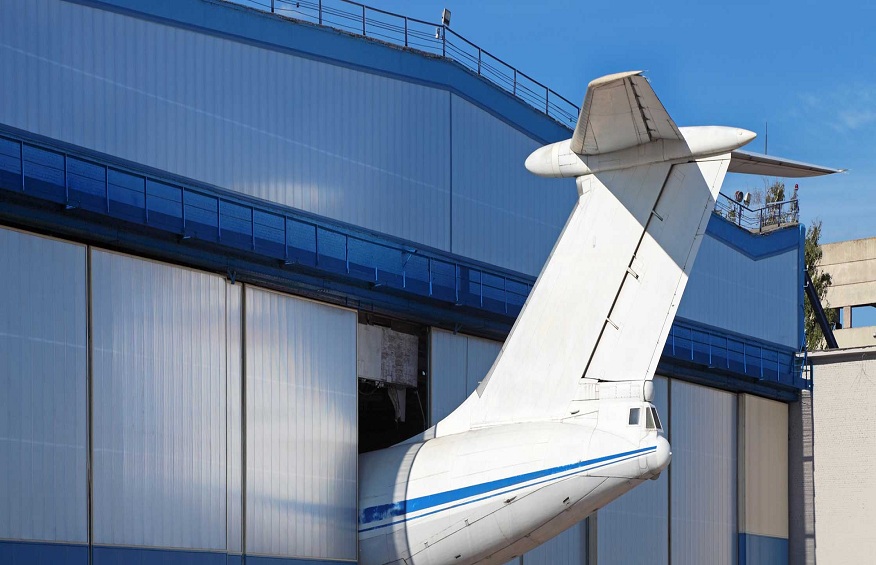The aviation industry continually seeks cost-effective solutions for its infrastructure needs, especially in the construction of aircraft hangars. Metal airplane hangars have emerged as a popular choice, offering numerous advantages over traditional building materials. Explores the cost-effective benefits of metal hangars and why they are increasingly preferred in the aviation sector.
Durability and Longevity
Metal hangars boast exceptional durability and longevity. Unlike traditional materials, metal resists environmental factors like moisture, pests, and extreme weather conditions. This resilience translates into lower maintenance costs and a longer lifespan for the hangar. The inherent strength of metal also means that hangars can withstand the substantial weight and movement associated with aircraft and aviation equipment, further enhancing their longevity. This durability is a key factor in the cost-effectiveness of metal hangars, as it reduces the need for frequent repairs and replacements, ensuring that the hangar remains functional and reliable for many years.
Cost-Effective Construction
The construction process of metal airplane hangars is notably more cost-effective compared to traditional hangars. Using prefabricated components in metal hangars significantly reduces construction time and labor costs. These components are manufactured in a controlled environment, ensuring quality and reducing waste. Additionally, the lightweight nature of metal components lowers transportation costs and simplifies the construction process. This streamlined approach saves time and reduces the overall construction budget, making metal hangars an economically attractive option for businesses and airports looking to expand their infrastructure without incurring exorbitant costs.
Energy Efficiency
Metal hangars are highly energy efficient, which contributes significantly to their cost-effectiveness. The ability to integrate advanced insulation systems into metal hangars results in superior thermal performance, keeping the interior temperature regulated and reducing the need for extensive heating and cooling. This insulation efficiency can lead to substantial savings on energy bills. Furthermore, metal surfaces can be coated with reflective materials that minimize heat absorption, further enhancing the energy efficiency of the hangar. These energy-saving features make metal airplane hangars not only more affordable to operate but also more environmentally friendly.
Adaptability and Customization
The adaptability and customization options of metal hangars add to their cost-effectiveness. Metal structures can be easily modified to accommodate changing needs or expanded to provide additional space. This flexibility is particularly beneficial in the aviation industry, where the need for space and functionality can evolve rapidly. Customization options allow for the optimization of space usage, ensuring that every square foot of the hangar serves a purpose. This adaptability reduces the need for new construction as needs change, making metal hangars a financially sound long-term investment.
Low Maintenance Requirements
One of metal airplane hangars’ most significant cost-effective advantages is their low maintenance requirements. Metal surfaces are less prone to damage and degradation, which means they require less upkeep compared to traditional building materials. They are not susceptible to rot, warping, or insect damage, and their surfaces can be treated to resist rust and corrosion. These low maintenance requirements translate into lower operational costs over the hangar’s lifetime, making metal hangars an economical choice for short-term and long-term planning.
Weather Resistance
Metal hangars offer superior weather resistance, essential in many regions prone to harsh weather conditions. They can be designed to withstand high winds, heavy snow, and other extreme weather events. This resilience ensures the safety and protection of the aircraft housed within and minimizes the risk of weather-related damage. The reduced risk of damage from weather events further contributes to the cost-effectiveness of metal hangars, as it lowers the likelihood of expensive repairs and downtime.
Aesthetics and Design Flexibility
Beyond functionality, metal hangars also offer aesthetic appeal and design flexibility. The versatility of metal allows for a variety of architectural designs, from traditional to modern, enabling hangars to complement their surroundings or stand out as architectural landmarks. This flexibility in design does not significantly impact the overall cost, allowing for aesthetically pleasing, cost-effective structures. The ability to customize the appearance of metal hangars adds value to the property and enhances the overall user experience, making them a desirable option for businesses and aviation enthusiasts alike.
Environmental Sustainability
Environmental sustainability is another cost-effective advantage of metal airplane hangars. Metal is a recyclable material, and many metal hangars are constructed using a significant percentage of recycled content. This sustainability aspect is beneficial for the environment and can result in cost savings, particularly in regions with incentives for using eco-friendly materials. Additionally, the reduced waste during the construction process and the energy efficiency of metal buildings contribute to their overall environmental friendliness, aligning with the trend toward sustainable construction practices in the aviation industry.
Scalability
Scalability is a crucial aspect of metal hangars, making them cost-effective for small and large-scale operations. The modular design of metal structures allows for easy expansion or modification, accommodating different types and sizes of aircraft as requirements change. This scalability means that hangars can be tailored to specific needs without incurring the high costs associated with traditional construction methods. The ability to scale up or down as needed ensures that metal hangars remain a practical and economical solution throughout their lifecycle.
Conclusion
Metal hangars offer a range of cost-effective advantages that make them a superior choice for housing aircraft. Their durability, energy efficiency, adaptability, low maintenance requirements, environmental sustainability, and scalability make them an ideal solution for the aviation industry. Coastal Steel Structures stands out as a reliable and experienced provider for those seeking to invest in a metal airplane hangar. With their expertise in aircraft hangars, Coastal Steel Structures can deliver a cost-effective, high-quality metal hangar tailored to your specific needs. Visit their website to explore your options and benefit from the cost-effective advantages of metal hangars.

















+ There are no comments
Add yours